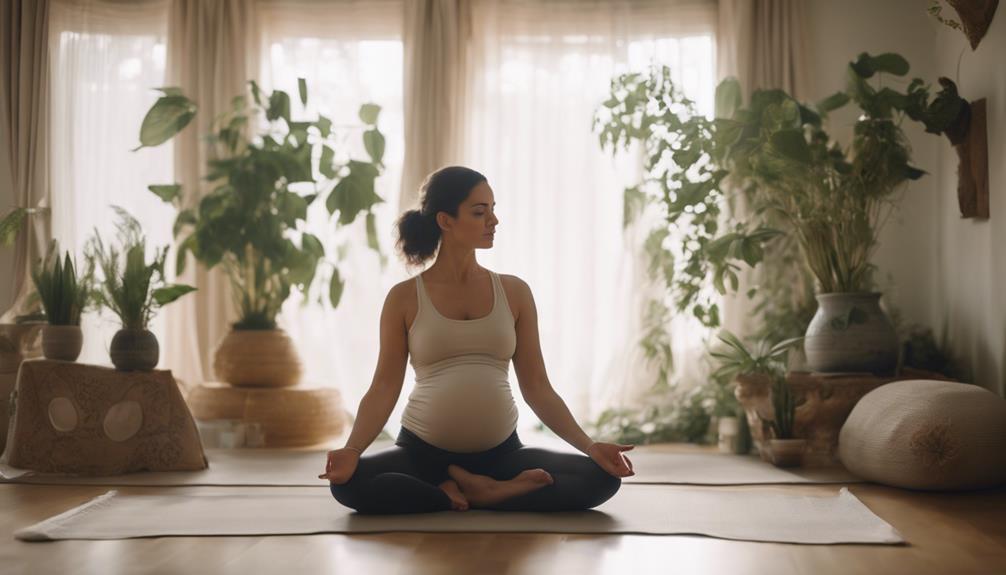In the world of activewear, the demand for sustainable and comfortable clothing is on the rise. Among the various options available, bamboo yoga trousers have emerged as a popular choice for those who prioritize both performance and environmental responsibility. This article delves into what bamboo yoga trousers are, their benefits, and everything you need to know before making a purchase.
What Are Bamboo Yoga Trousers and Their Benefits?
Bamboo yoga trousers are made from fabric derived from the bamboo plant, which is known for its softness and breathability. The production process transforms bamboo into a smooth textile that is not only comfortable against the skin but also provides excellent moisture-wicking properties. As a result, these trousers are ideal for yoga sessions where flexibility and breathability are paramount.
One of the key benefits of bamboo yoga trousers is their natural antibacterial properties. This means they are less likely to retain odors, making them suitable for extended wear during workouts or daily activities. Additionally, bamboo fabric is hypoallergenic, making it a great choice for individuals with sensitive skin. The trousers are designed to move with the body, allowing for unrestricted motion during yoga poses.
The Environmental Impact of Bamboo Fabric Production
Bamboo is often touted as an environmentally friendly alternative to conventional fabrics. The bamboo plant grows rapidly and requires significantly less water than cotton. Furthermore, it can thrive without the use of pesticides or fertilizers, making it a sustainable crop. This rapid growth cycle also means bamboo can be harvested every three to seven years, which reduces the pressure on natural forests.
However, it is important to consider the environmental impact of how bamboo is processed into fabric. The most common method involves a chemical process that can be harmful if not managed properly. Look for brands that emphasize eco-friendly production practices, including closed-loop systems that minimize waste and pollution. Transparency in sourcing and manufacturing is crucial for ensuring that the benefits of bamboo do not come at the expense of the environment.
Key Features to Look for in Bamboo Yoga Trousers
When shopping for bamboo yoga trousers, certain features can enhance your experience. First and foremost, consider the fabric blend; while pure bamboo is soft and comfortable, blends with spandex or polyester can provide added stretch and durability. A good pair of bamboo yoga trousers should have a four-way stretch to accommodate a wide range of movements during yoga practice.
Additionally, pay attention to the waistband design. High-rise options are popular for their ability to provide support and coverage during various poses. Look for trousers with a flatlock seam construction, as this feature helps to prevent chafing and irritation during wear. Pockets can also be a practical addition, allowing you to carry small essentials while you practice.
Comparing Bamboo Yoga Trousers to Traditional Fabrics
Bamboo yoga trousers stand out when compared to traditional yoga fabrics like cotton or synthetic blends. Cotton, while breathable, tends to absorb moisture, which can lead to discomfort during intense workouts. In contrast, bamboo fabric wicks moisture away from the body, keeping you dry and comfortable throughout your yoga session.
Synthetic fabrics, on the other hand, often provide excellent stretch but can be less breathable and may trap odors. Bamboo yoga trousers offer a middle ground, combining the benefits of both natural and synthetic materials. They provide comfort, durability, and moisture management without compromising on sustainability, making them an attractive option for eco-conscious consumers.
How to Care for Your Bamboo Yoga Trousers
Caring for your bamboo yoga trousers is essential to maintaining their quality and longevity. Machine washing on a gentle cycle with cold water is recommended to preserve the fabric’s softness and elasticity. Using a mild detergent can help prevent any potential damage to the fibers. It’s also advisable to avoid bleach and fabric softeners, which can affect the natural properties of bamboo.
After washing, air drying is the best option for preserving the shape and feel of your trousers. If you must use a dryer, opt for a low heat setting to minimize shrinkage. Regularly check for any signs of wear, such as loose seams or fading, and address them promptly to extend the life of your bamboo yoga trousers.
Popular Brands Offering Bamboo Yoga Trousers
Several brands have recognized the demand for bamboo yoga trousers and have started to integrate them into their product lines. Companies like Boody and Bamboo Body offer a variety of styles and colors, focusing on both comfort and eco-friendliness. Their collections often feature not only yoga trousers but also matching tops and activewear accessories made from bamboo fabric.
Another notable brand is Pact, which emphasizes organic materials and fair trade practices. Their bamboo yoga trousers are designed with sustainability in mind, offering products that are both stylish and socially responsible. As the market for sustainable activewear grows, more brands are likely to emerge, providing consumers with a wider range of options.
Customer Reviews: What Wearers Are Saying
Customer feedback on bamboo yoga trousers is largely positive, with many wearers praising their comfort and softness. Users often note the breathable fabric, which keeps them cool and dry during workouts, and the lightweight feel that allows for easy movement. Many customers appreciate the natural look and feel of the fabric, finding it a refreshing change from traditional synthetic options.
However, some reviews mention concerns about durability, particularly regarding wear after repeated washes. A few wearers have experienced fading or loss of elasticity over time. It’s worth noting that the quality of bamboo yoga trousers can vary by brand, so researching customer experiences and choosing reputable manufacturers can help in making an informed decision.
Pricing Guide: Bamboo Yoga Trousers and Budget Options
Bamboo yoga trousers are available across a wide price range, catering to various budgets. Entry-level options can start at around $30, making them accessible for those just dipping their toes into sustainable activewear. Mid-range options typically fall between $50 to $80, offering better quality and additional features like better stitching and enhanced comfort.
For those willing to invest in higher-end brands, prices can exceed $100. These premium options often boast advanced fabric technology, improved durability, and unique design features. It is advisable to weigh the costs against the quality and sustainability practices of the brand to ensure that you are making a worthwhile investment.
Styling Tips: How to Wear Bamboo Yoga Trousers
Bamboo yoga trousers are versatile enough to be worn beyond the yoga studio. Pairing them with a comfortable tank top or a fitted tee creates a relaxed, athleisure look perfect for running errands or lounging at home. Layering with a lightweight cardigan or hoodie can add an extra touch of style while providing warmth during cooler weather.
For those looking to transition from yoga to casual outings, accessorizing with a statement necklace or stylish sneakers can elevate the look. Because bamboo yoga trousers often come in solid colors and simple designs, they can easily be mixed and matched with various tops, making them a staple in any activewear wardrobe.
Bamboo yoga trousers are a compelling choice for those seeking comfort, performance, and sustainability in their activewear. With their numerous benefits, including moisture-wicking properties and a lower environmental impact, they present a noteworthy alternative to traditional fabrics. As with any purchase, it’s essential to consider your specific needs and preferences, but bamboo yoga trousers could be the perfect addition to your wardrobe for both practice and everyday wear.


